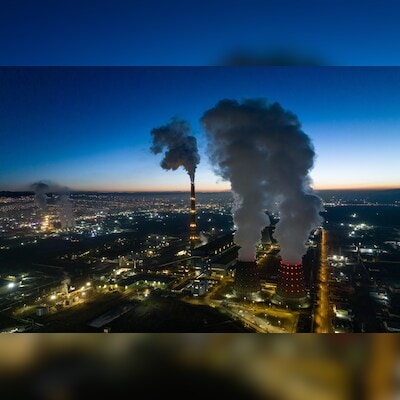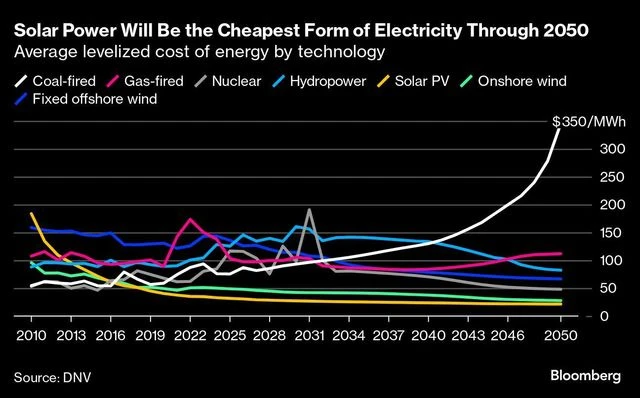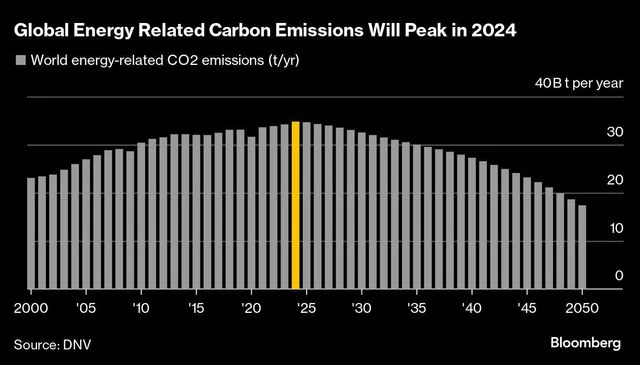Global emissions likely have peaked as renewable sources take hold | World News

)
DNV, a Norwegian risk management company, finds global emissions likely have peaked. Image: Bloomberg
By Eamon Akil Farhat
The world is choking from emissions more than ever but that trend is set to reverse starting next year as the cost of solar panels and batteries crowd out coal and stunt the growth of oil, a new report says.
Click here to connect with us on WhatsApp
DNV, a Norwegian risk management company, finds global emissions likely have peaked, but the transition to clean energy remains “too slow.”
)
Though renewable growth continues to beat records, some countries continue to struggle, the report said. More military spending and tough economic conditions mean nations are sometimes turning away from ambitious climate goals.
“There is a growing mismatch between short-term geopolitical and economic priorities versus the need to accelerate the energy transition,” Eriksen added.
The cost of deploying solar panels and battery technology is due to drop by 19 per cent by 2030, helping deliver record amounts of low carbon power. Renewables are due to grow to 2.2 times by 2030, well below the tripling set out during the COP28 United Nations Climate Change Conference. Similarly, energy efficiency improvements are taking place at about half the rate recommended by the UN’s climate body.
)
Though renewable growth continues to beat records, some countries continue to struggle, the report said. More military spending and tough economic conditions mean nations are sometimes turning away from ambitious climate goals.
“There is a growing mismatch between short-term geopolitical and economic priorities versus the need to accelerate the energy transition,” Eriksen added.
The cost of deploying solar panels and battery technology is due to drop by 19 per cent by 2030, helping deliver record amounts of low carbon power. Renewables are due to grow to 2.2 times by 2030, well below the tripling set out during the COP28 United Nations Climate Change Conference. Similarly, energy efficiency improvements are taking place at about half the rate recommended by the UN’s climate body.
DNV lowered its 2050 forecast for wind power by 18 per cent, the second year it cut expectations. Higher financing costs, supply chain issues and turbine quality concerns are to blame, it said.
First Published: Oct 09 2024 | 9:22 AM IST




